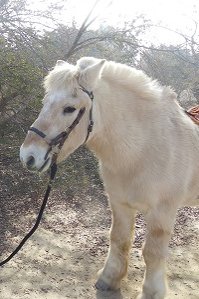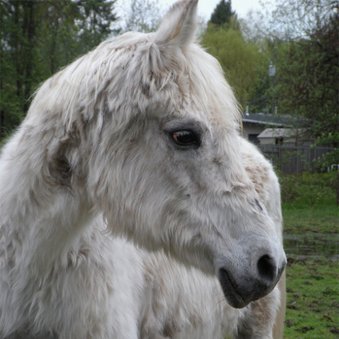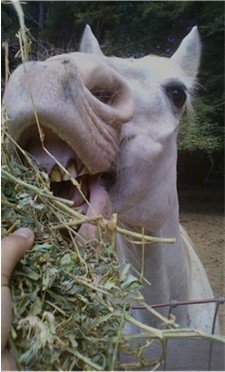Preventing Equine Metabolic Syndrome
Lower Your Horse's Odds of Getting It
Equine metabolic syndrome (EMS) has also been called peripheral Cushing's disease, although that is a bit of a misnomer. EMS and Cushing's may share some similarities, but they are not the same disease.
 Ponies are prone to Equine Metabolic Syndrome
Ponies are prone to Equine Metabolic SyndromeMetabolic syndrome is not fully understood. It is suggested the EMS can be hereditary or caused by taking an otherwise healthy horse and exposing them to a life of leisure. A life with little exercise and an abundance of high protein feed, especially during their fist 10 years of life.
EMS can affect any breed of horse and donkey, but is most common in horses that have been bred to survive in harsh environments…. Morgans, Paso Finos, warmbloods and all ponies.
Symptoms of EMS
- Extremely easy keeper
- Over weight
- Fatty deposits in strange places
- Glucose intolerance (adverse reaction to sugar)
- Low levels of Thyroid hormones
- Insulin insensitivity
- Abnormal amounts of fat in the blood stream
Horses with EMS will gain weight on substantially less feed than another horse of the same size. They will show all the signs of an over weight horse….fat back, cresty neck and the like…plus they will get fatty deposits in strange places like above the eyes, over the loins, inside the sheath, and around the tail head. They may also have a pot bellied appearance.
Equine Metabolic
Syndrome and Laminitis
The Perfect Storm
EMS horses are at extremely high risk for crippling laminitis. It is essential that these horses be keep on a low starch, low sugar diet. This means…no grain, no alfalfa, no rich pastures!
A proper exercise routine is very important to help these horses maintain a healthy body weight. It is crucial that these overweight horses be introduced to exercise very carefully. A fat, out-of-condition horse suffering from EMS, thrown into exercise too quickly, is dangerously at risk for founder. Not a mild laminitis, but a severe permanent debilitating laminitis. Don’t risk it.
Easy Does It
Even a 10-15% weight loss in an over weight horse will show substantial health improvement. Caring for a horse with EMS is not difficult, it just requires vigilance. You must remain aware of your horse's feed intake and exercise them diligently.
If you have an easy keeper, the best practice is prevention. Once a horse has foundered it is much more difficult to deal with the consequences. Talk to your vet about the best feed choices for a long and healthy life for your easy keeper horse.
More Related Equine Health Articles:
Cushing's Disease

Learn the difference between equine metabolic syndrome and equine Cushing's disease.
This information is written for the horseman to better understand and cope with the variety of disease and injury that can occur during the course of horse ownership. Always consult with your Veterinarian regarding the care and treatment of your equine.
Home > Horse Diseases > Equine Metabolic Syndrome

